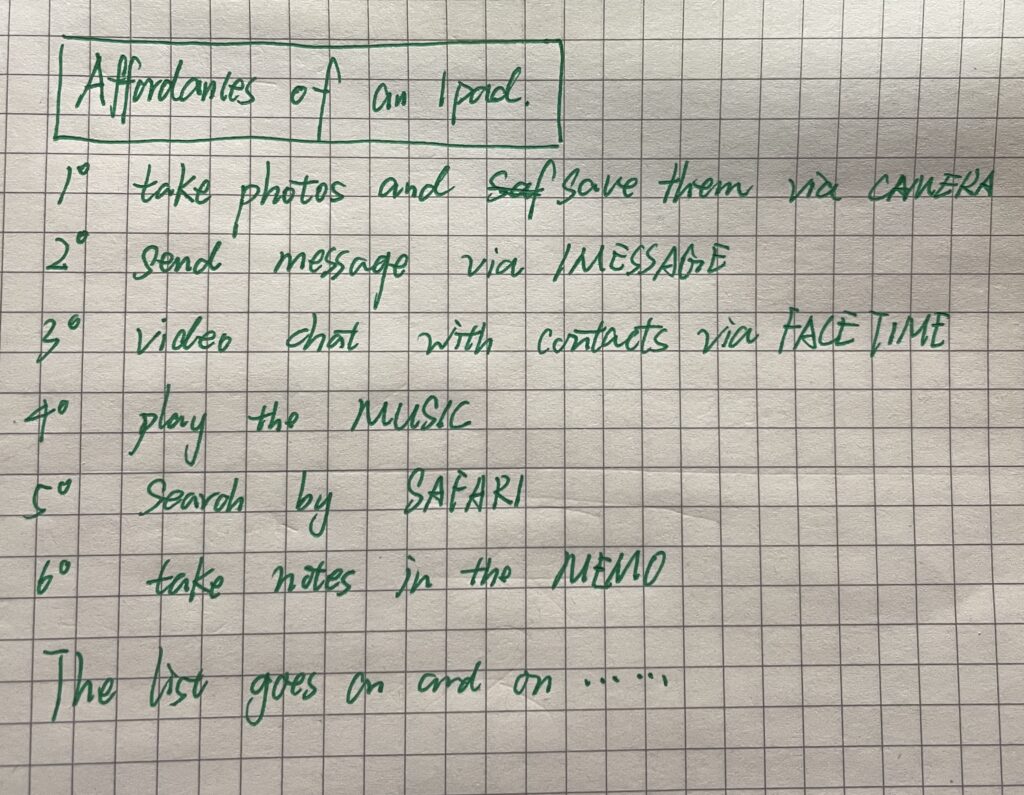This short speech by Donald Norman introduced us to a psychological concept, that is, Affordance. To put it simply, it is the possibility provided by the environment for people’s behavior. In the field of interaction, Affordance refers to the relationship between a physical object and a person, and what people can do with this object. This sounds simple, but its scope is very wide. Because no matter animals and humans, there are some interactions all the time. For designers, affordance is a reminder to users how to operate. However, the real meaning of affordance is that the user has all the operational possibilities for this physical object. This is completely different from the Signifiers in symbology, but it is easy to confuse people.
By reading Victor Kaptelinin’s article, we can clearly know that Donald Norman’s original intention is actually people’s direct perception of an object, which is not affected by external objects and has not been processed internally. In other words, regardless of good use or bad use, any role this object provides to people.
At the same time, it is about physics and psychology. People need to transcend subjective consciousness to understand Affordance, just as Naoto Fukasawa said, it is simple and does not require thinking. For a product, I think the best is that it can be done without thinking.
Of course, the Affordance of physical objects will inevitably be affected, such as the three attributes of environment, medium, substances, surfaces, and people’s ability to act. The simplest example is that adults and babies have different effects on one thing.
Regarding Affordance, some can be recognized, and some cannot be recognized, because the object has unlimited possibilities. However, perceived affordance is things like door handles. These structures must be recognized, and people need to understand how the object should be operated.

Reference: